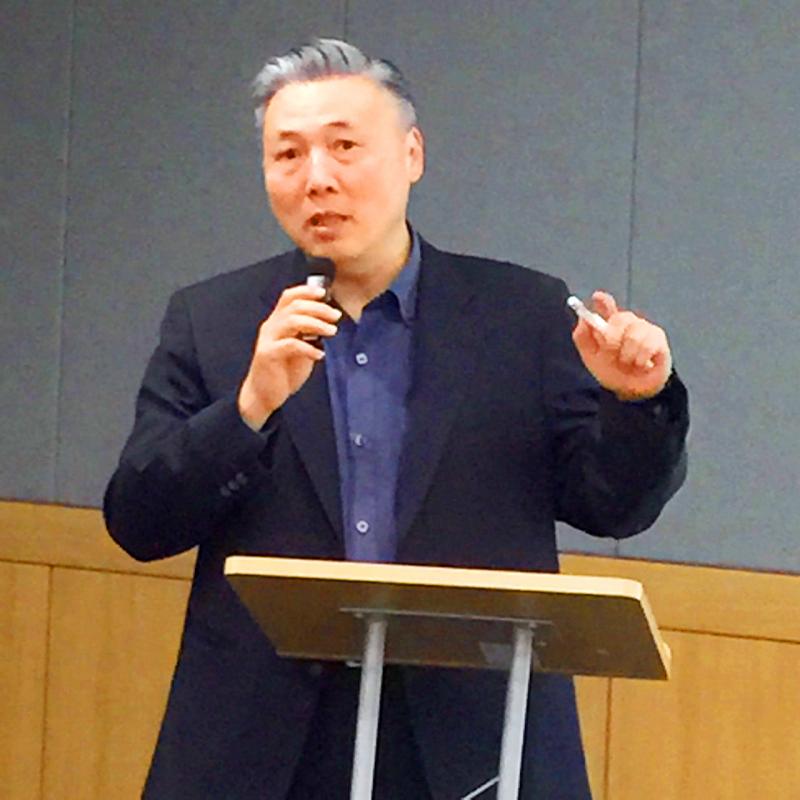ASE Technology Holding Co (ASE, 日月光投控), the world’s biggest chip assembler and tester, yesterday issued an optimistic outlook in expectation that its core business revenue would grow more than 20 percent this year on stronger customer demand and limited capacity.
Earlier this year, ASE projected that revenue from its chip assembly and testing services would this year be double the estimated revenue growth of the semiconductor industry.
“We are seeing stronger assembly and testing manufacturing demand than our previous target,” ASE chief operating officer Tien Wu (吳田玉) told an online investors’ conference. “Our sentiment is better than our previous guidance. The momentum will last into next year.”

Photo: Grace Hung, Taipei Times
Customer demand indicates that there would be better than seasonal demand in the first quarter next year, Wu said.
That might create an unusual situation in which the first quarter could be better than the fourth, he added.
ASE expects that supply and demand balance would be reached in 2023, given long manufacturing equipment delivery time stretching to about one year, Wu said.
“Next year, we still need to be smart and efficient in managing the bottleneck,” he added.
In response to investors’ concern about double booking, Wu said inventory correction might occur, but it should be temporary and limited to certain regions.
It would have a limited impact on ASE’s overall business momentum, he added.
Many of its customers had signed long-term service agreements and intend to extend such contracts to 2023, the company said, adding that long-term supply agreements were announced in April as customers sought to secure capacity amid a supply crunch.
In this quarter, ASE expects assembly and testing manufacturing shipments to expand 12 percent from the second quarter, while average selling prices are to hold steady at last quarter’s level, it said.
Gross margin could improve about 1.2 percentage points this quarter from 25.6 percent last quarter, the company said, after already reaching its target of 25 percent for the year.
ASE also expects gross-margin improvement next year.
ASE yesterday posted 49 percent annual growth in net profit to NT$10.34 billion (US$370 million) during the second quarter, compared with NT$6.94 billion. That represented a quarterly increase of 22 percent from NT$8.48 billion.
Earnings per share rose to NT$2.4 last quarter from NT$1.63 a year earlier and NT$1.97 a quarter earlier.

STEEP DECLINE: Yesterday’s drop was the third-steepest in its history, the steepest being Monday’s drop in the wake of the tariff announcement on Wednesday last week Taiwanese stocks continued their heavy sell-off yesterday, as concerns over US tariffs and unwinding of leveraged bets weighed on the market. The benchmark TAIEX plunged 1,068.19 points, or 5.79 percent, to 17,391.76, notching the biggest drop among Asian peers as it hit a 15-month low. The decline came even after the government on late Tuesday authorized the NT$500 billion (US$15.2 billion) National Stabilization Fund (國安基金) to step in to buoy the market amid investors’ worries over tariffs imposed by US President Donald Trump. Yesterday’s decline was the third-steepest in its history, trailing only the declines of 2,065.87 points on Monday and

TAKING STOCK: A Taiwanese cookware firm in Vietnam urged customers to assess inventory or place orders early so shipments can reach the US while tariffs are paused Taiwanese businesses in Vietnam are exploring alternatives after the White House imposed a 46 percent import duty on Vietnamese goods, following US President Donald Trump’s announcement of “reciprocal” tariffs on the US’ trading partners. Lo Shih-liang (羅世良), chairman of Brico Industry Co (裕茂工業), a Taiwanese company that manufactures cast iron cookware and stove components in Vietnam, said that more than 40 percent of his business was tied to the US market, describing the constant US policy shifts as an emotional roller coaster. “I work during the day and stay up all night watching the news. I’ve been following US news until 3am

Six years ago, LVMH’s billionaire CEO Bernard Arnault and US President Donald Trump cut the blue ribbon on a factory in rural Texas that would make designer handbags for Louis Vuitton, one of the world’s best-known luxury brands. However, since the high-profile opening, the factory has faced a host of problems limiting production, 11 former Louis Vuitton employees said. The site has consistently ranked among the worst-performing for Louis Vuitton globally, “significantly” underperforming other facilities, said three former Louis Vuitton workers and a senior industry source, who cited internal rankings shared with staff. The plant’s problems — which have not

TARIFF CONCERNS: The chipmaker cited global uncertainty from US tariffs and a weakening economic outlook, but said its Singapore expansion remains on track Vanguard International Semiconductor Corp (世界先進), a foundry service provider specializing in producing power management and display driver chips, yesterday withdrew its full-year revenue projection of moderate growth for this year, as escalating US tariff tensions raised uncertainty and concern about a potential economic recession. The Hsinchu-based chipmaker in February said revenues this year would grow mildly from last year based on improving supply chain inventory levels and market demand. At the time, it also anticipated gradual quarter revenue growth. However, the US’ sweeping tariff policy has upended the industry’s supply chains and weakened economic prospects for the world economy, it said. “Now